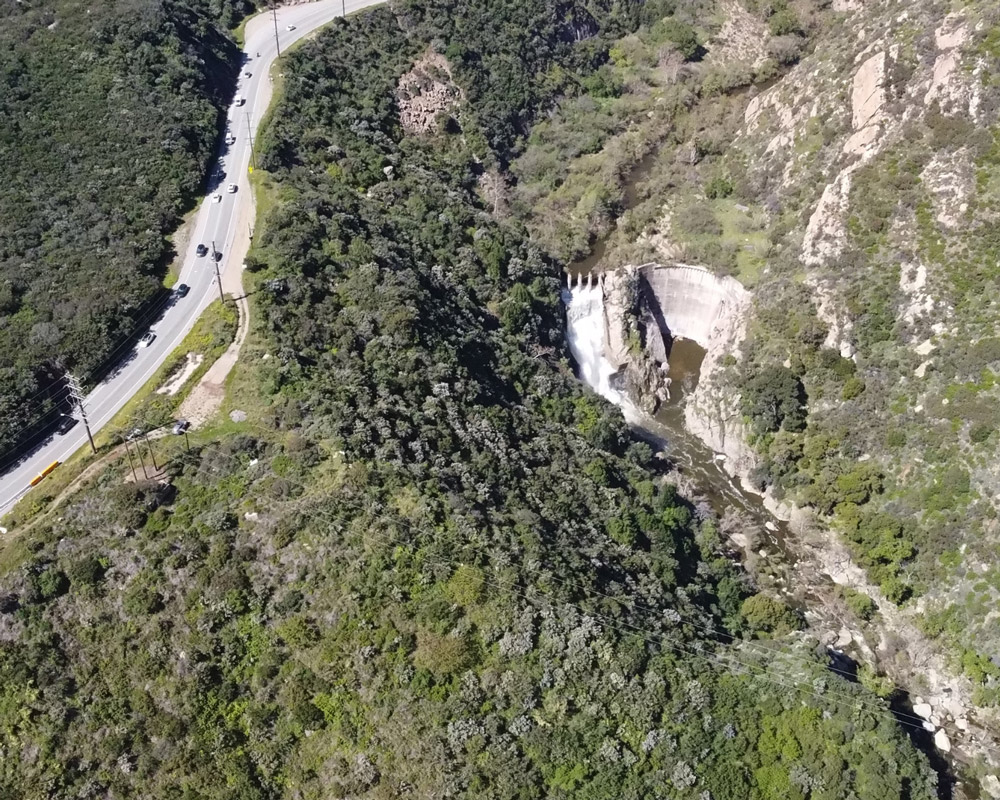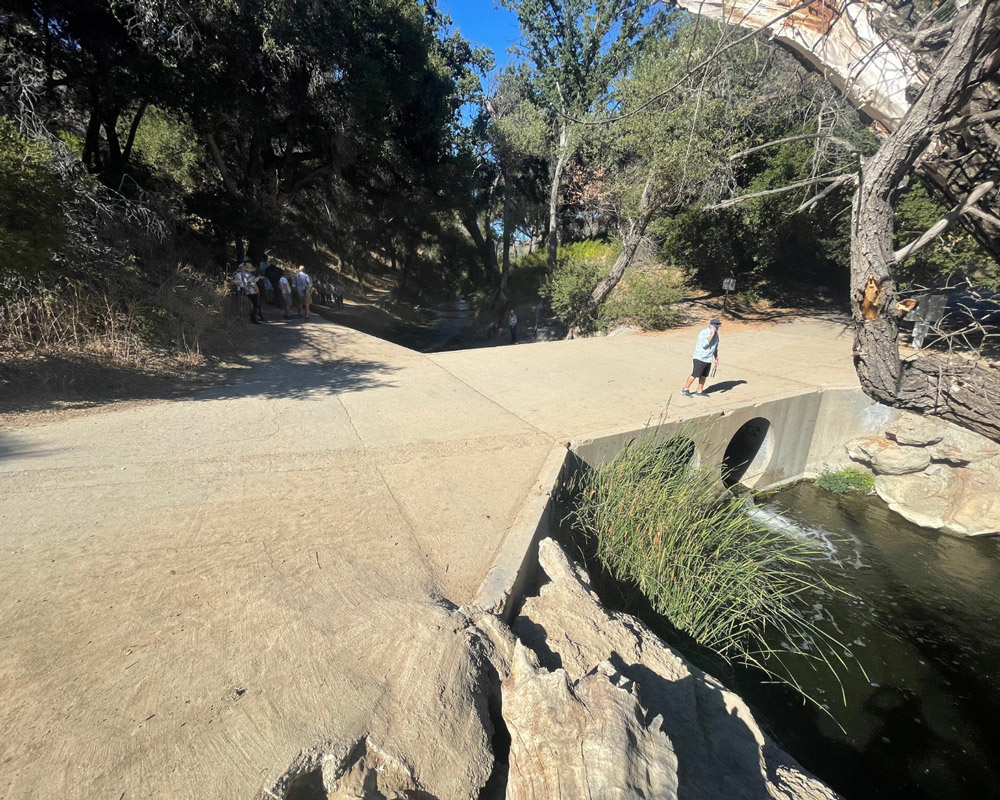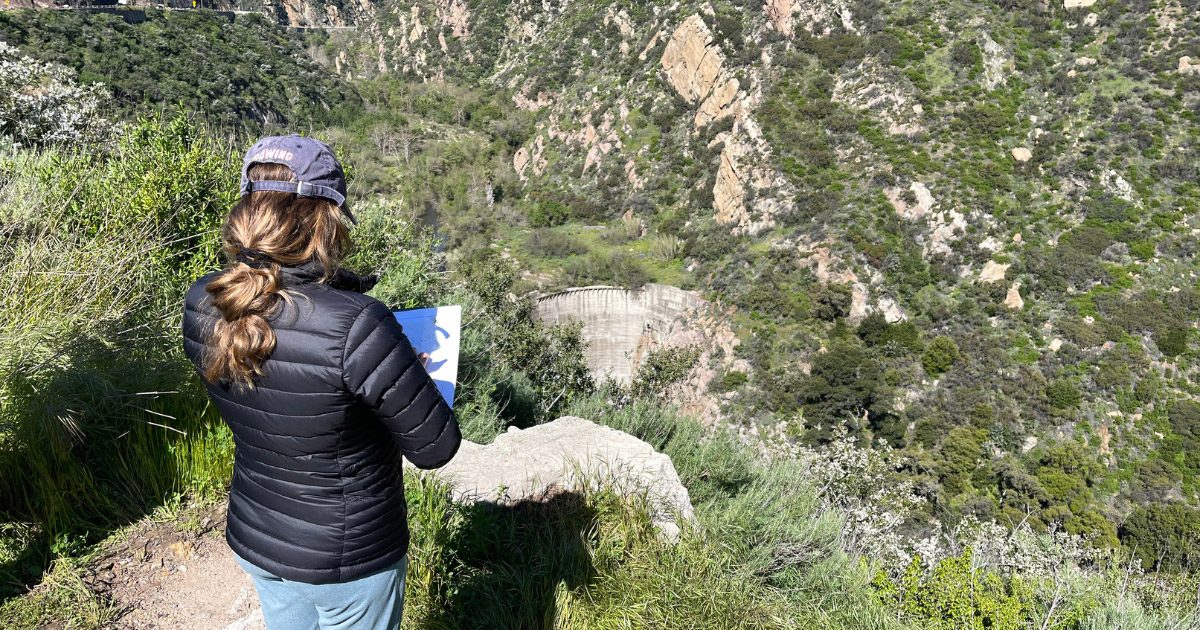Malibu Creek Ecosystem Restoration Project and Rindge Dam Removal Advances
On April 25, 2023, California State Parks announced a major next step for the Malibu Creek Ecosystem Restoration Project with the beginning of the pre-construction, engineering, and design (PED) phase. This phase is managed by State Parks, the project lead, and project partners including California Trout and a team of consultants. Located within Malibu Creek State Park in the Santa Monica Mountains in Los Angeles County, the project will restore ecological function in and around Malibu Creek from summit to seabed.
What is the Malibu Creek Ecosystem Restoration Project?
For a century, the 100-foot-tall Rindge Dam has severed the Malibu Creek watershed from its natural connection to Malibu Lagoon and onward to Santa Monica Bay and the Pacific Ocean. This abandoned dam, which provides no water storage or flood control benefits, stands as an insurmountable barrier to aquatic species, including the federally endangered Southern Steelhead. It also prevents natural sediment flows from the Santa Monica Mountains downstream to Malibu’s Coast, breaking the natural cycle of beach replenishment and further exacerbating beach erosion. State Parks is leading the effort to deconstruct the dam and rebuild the river, addressing a century of damage and restoring resiliency to the Malibu Creek Watershed.
State Parks, along with a team of consultants and partners from CalTrout, McMillen, LLC, Stillwater Sciences, and others will conduct baseline biological surveys, hydrology/hydraulic modeling and flood risk assessment, engineering plans, environmental permitting, public outreach, and other project studies to advance the project to a 90% level of design.
When completed, the project will restore creek functions and increase habitat connectivity, including opening 15 additional miles of stream habitat for Southern California steelhead, improve climate resiliency, and restore natural sediment transport processes that will nourish Malibu beaches with vital sand. The project will also improve public safety by removing the obsolete Rindge Dam where serious injuries and fatalities have occurred. Removing Rindge Dam will not only help the recovery of southern California steelhead but will also benefit countless other species.


“By reconnecting Malibu Creek and its tributaries located high in the Santa Monica Mountains to Malibu Lagoon, this project implements a rare opportunity for Summit-to-Ocean restoration within an undeveloped canyon remarkably close to downtown Los Angeles. Restoration will support recovery of Southern steelhead and benefit countless other local species,” said Curtis Knight, executive director of California Trout. “CalTrout is proud to move forward on this project alongside our partners and the public. We look forward to a future where people, fish, and the broader community can enjoy the benefits of this project.”
The target date for completion of the PED phase is March 2026. The project is estimated to create 1,887 jobs statewide and $157 million in gross regional product during the construction phase.
Learn more about the project and stay up to date with upcoming public events by visiting restoremalibucreek.org or by signing up for the Malibu Creek Ecosystem Restoration Project newsletter.
Cover Photo by Bernard Yin





